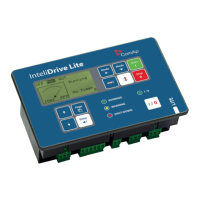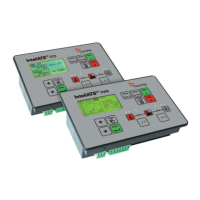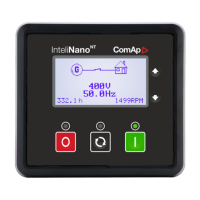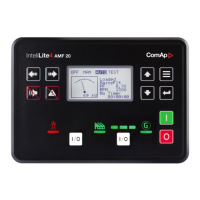InteliDrive DCU Industrial 3.4.0 Global Guide
262
Related FW 3.4.0 Related applications AS
Comm object 10000
Description
Output Value of Loadsharing functional block inside ID-DCU Industrial controller. It is RQSP Ramp (page
261) influenced by loadsharing variation signal (this signal can increase / decrease the RQSP Ramp value
by ±1.5%). The ThrottlePos value is intended to send as required speed to an engine. Load sharing block
diagram.
See following chart describing ThrottlePos value in Running and Loadsharing state.
Note: The regulation speed of loadsharing variation signal (max 1.5%) is given by PI loop parameters
Load Gain (page 138) and Load Int (page 138). The Loadsharing: ThrottlePos value is influenced by
ramping specified by Loadsharing: RQSP Ramp setpoint.
Note: The Loadsharing state can be activated from Running state and if both following conditions are
met:
Actual Engine speed is in range specified by setpoints ClutchMinSpeed (page 139) and
ClutchMaxSpeed (page 139)
REM CLUTCH (PAGE 174) is active (or I/0 front panel button is pressed)
There is loadsharing activation delay specified by setpoint Loadsharing: Clutch Del to postpone
loadsharing regulation after transient events after engine mechanical connection to gear-box.
Note: It is essential requirement to configure engine load information (ECU value “actual load”, physical
analog input reading actuator position feedback or boost pressure etc.) into ENGINE TORQUE (PAGE 236)
for loadsharing functionality.
Note: All ID-DCU Industrial controllers working in the same loadsharing group have to be interconnected
on CAN2 bus, controllers must have different controller addresses.
Note: Loadsharing state - the Loadsharing: Back Up Speed value is taken into account instead of Speed
Request (page 256) if the REQUESTED RPM (PAGE 236) indicates Sensor Fail (#####) and BACK UP
SPEED1 (PAGE 173) is active.
ThrottlePos

